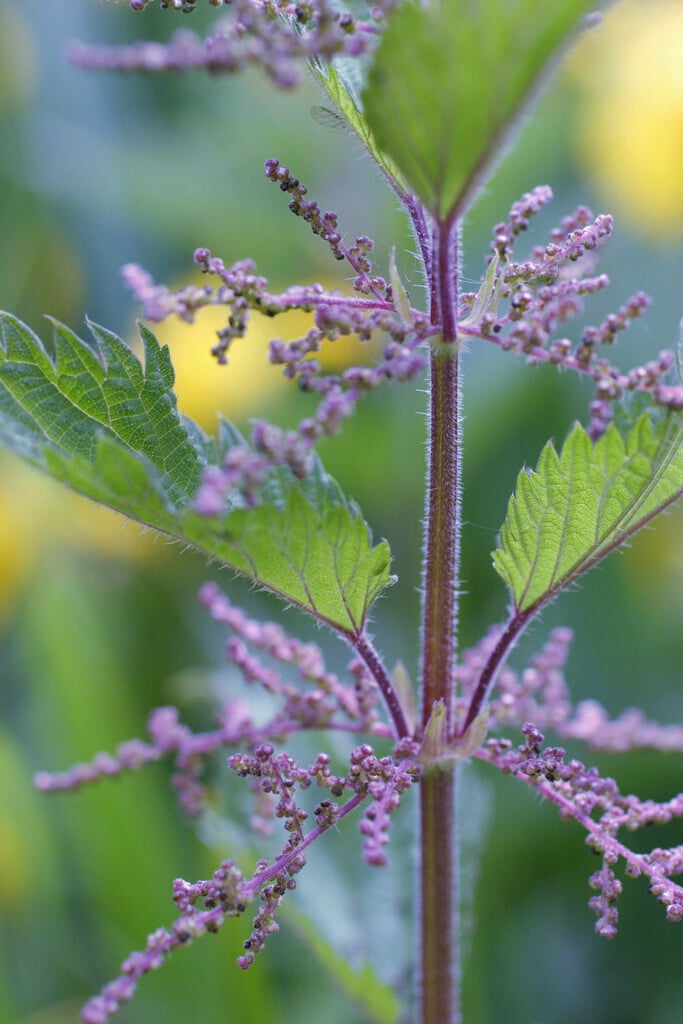Urtica dioica
common stinging nettle
A herbaceous perennial with spreading roots and creeping horizontal stems able to form large, patches of upright stems, to 1.5m tall, with dark green foliage. Leaves and stems are covered in stinging and non-stinging hairs. Cream or brownish-green, catkin-like flowers are produced from the leaf axils from late spring to early autumn
Size
Ultimate height
1–1.5 metresTime to ultimate height
2–5 yearsUltimate spread
2.5–4 metresGrowing conditions
Moisture
Moist but well–drained, Well–drainedpH
Acid, Alkaline, NeutralColour & scent
| Stem | Flower | Foliage | Fruit | |
| Spring | Cream Green | Green | ||
|---|---|---|---|---|
| Summer | Cream Green | Green | ||
| Autumn | Cream Green | Green | ||
| Winter |
Position
- Full shade
- Full sun
- Partial shade
Aspect
East–facing or North–facing or South–facing or West–facing
Exposure
Exposed or Sheltered Hardiness
H7Botanical details
- Family
- Urticaceae
- Native to GB / Ireland
- Yes
- Foliage
- Deciduous
- Habit
- Clump forming, Matforming
- Potentially harmful
- Skin irritant. Wear gloves and other protective equipment when handling Pets (dogs): Harmful if eaten and via skin, skin/eye irritant - for further information and contact numbers regarding pets, see the HTA guide to potentially harmful plants
- Genus
A genus of annual or perennial flowering plants with arrow-shaped, serrated green foliage and small clusters of greenish-brown flowers. Many species have stinging hairs on the leaves. The foliage can be used for making tea and for medicinal purposes, and the plants provide valuable food and shelter for wildlife
- Name status
Correct
- Plant range
- Cosmopolitan
How to grow
Cultivation
May be planted for wildlife value and thrives in nitrogen-rich, moist but well-drained soil in a sunny position, but will grow almost anywhere. Self-seeds freely and can be difficult to control or eradicate, but is an important source of food for caterpillars and butterflies. See stinging nettles for further advice
Propagation
Spreads naturally by spreading roots and horizontal stems, and by seed
Suggested planting locations and garden types
- Wildlife gardens
Pruning
No pruning required
Pests
Generally pest-free
Diseases
Generally disease-free
Get involved
The Royal Horticultural Society is the UK’s leading gardening charity. We aim to enrich everyone’s life through plants, and make the UK a greener and more beautiful place.
